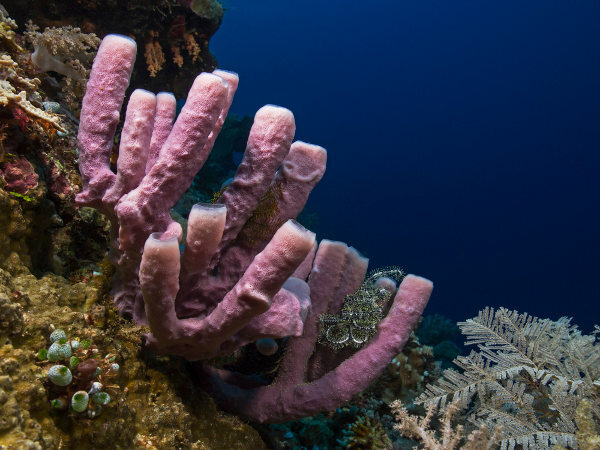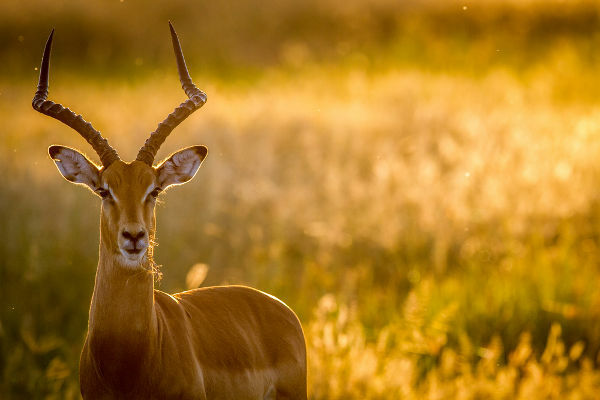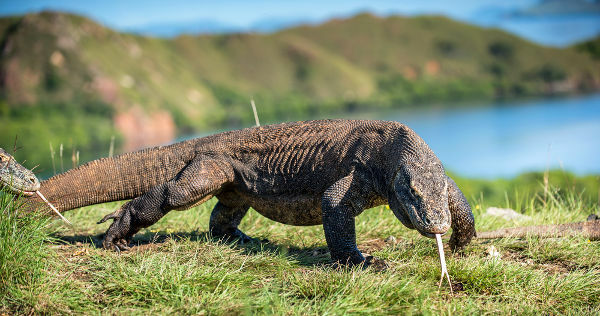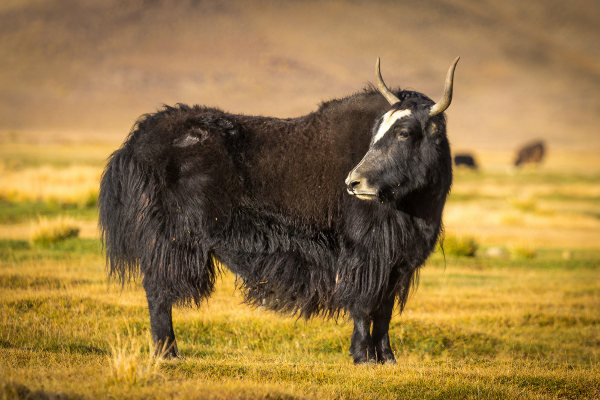The animals belong to the animalia kingdom and can be defined in a simplified way as organisms eukaryotes, multicellular and heterotrophic. It is believed, based on the study of fossils, that these organisms appeared about 710 million years ago. During the planet's history, many species have emerged and many have gone extinct. As an example of animals currently found on the planet, we can mention sponges, butterflies, dogs, cats, jellyfish and humans. As examples of those that became extinct, we can cite the dinosaurs, mammoths and saber-toothed tiger.
Read too:Extinct animals
→ Animal characteristics
We all know how to cite an example of an animal, but not everyone knows the characteristics necessary to differentiate them from other living beings. To be classified as an animal, the organism must be eukaryotic, multicellular and heterotrophic.

Eukaryote: a eukaryotic organism is one that has cells with a cell nucleus delimited by nuclear envelope (carioteca). In animal cells, the genetic material, therefore, is not dispersed in the cytoplasm as in bacteria (
prokaryotic organisms). In addition to the presence of a nuclear envelope, eukaryotic cells stand out for the presence of membranous organelles, such as mitochondria, golgiens complex and endoplasmic reticulum.Multicellular: all animals are made up of more than one cell, that is, there are no single-celled animals. In most animals, cells are joined together to form tissues.
Heterotrophic: animals are heterotrophic organisms, that is, they are living beings incapable of synthesizing their own food. For this reason, they need to ingest other living things or non-living organic matter.
Read too: laboratory animals
→ invertebrate animals
give the name of invertebrate to those animals that do not have a backbone. These animals have a great number of shapes, colors and sizes, being known microscopic species and some with more than ten meters in length, as is the case of the colossal squid. It is estimated that 95% of all animal species are invertebrates.

Sponges are invertebrate animals classified as poriferous.
Invertebrate animal phyla
porifers - In this group of invertebrates, we find sponges.
Cnidarians - As examples of cnidarians, we can mention corals and jellyfish.
platyhelminths - Representatives of this phylum are the tapeworm and the schistosome;
Nematodes - In this group, we have the roundworm and the pinworm.
annelids - As examples, we can mention earthworms and leeches.
molluscs - In the group of molluscs, we can mention as examples the squid and the oysters.
arthropods - They are the largest existing group of animals. This group includes, for example, all insects, crustaceans and arachnids.
echinoderms – Examples are starfish and sea urchins.

The bee is an invertebrate animal of the arthropod phylum.
→ Vertebrate animals
Traditionally, they are called animals vertebrates to those who have a backbone. However, the term is often used for animals that do not have this structure, such as witches (fish), which do not have any signs of vertebrae. Thus, it is preferable to call these organisms as cranials (Craniata), that is, animals that have a skull, be it bony or cartilaginous. Cranial animals include the group that has no vertebrae as well as vertebrates.

The impala is a vertebrate animal of the mammals group.
Vertebrate animals are grouped in the phylum called Chordata (corded). They are often divided into five groups:
Fish– Examples are sardines and sharks.
amphibians– Examples are toads, tree frogs and frogs.
reptiles– Examples are lizards, crocodiles and snakes.
birds– Examples are emu, bem-te-vi and peacock.
Mammals – Examples are humans, dogs, monkeys and whales.
Read too: Toads, frogs and tree frogs
→ carnivorous animals

The Komodo dragon is an example of a carnivorous animal.
You carnivorous animals are those who feed on other animals. To be able to feed in this way, these animals have a series of important adaptations. to ensure the capture of prey, such as poisons, claws, sharp developed and high tusks velocity. Examples of carnivorous animals jaguars, snakes, leopards, bears, sharks, jellyfish, crocodile and komodo dragon (pictured above).
→ herbivorous animals

The yak is a herbivore that resembles a bull.
You herbivorous animals feed on vegetables or algae and have characteristics that allow this type of feeding, such as teeth that ensure the cutting of leaves and digestive system with microorganisms capable of digesting cellulose, present in the cell wall of plant cells. Examples are sheep, horses, cows, giraffes, zebras, grasshoppers and yak (pictured above).
→ omnivorous animals
omnivorous animals are those that feed on animals as well as vegetables and algae. As omnivores have a broader diet, they have characteristics that allow this type of feeding. An example of these adaptations are teeth capable of cutting, biting and crushing food. Examples of omnivores are rats, cockroaches and humans.
→ Animal names from AZ

Kiwi is a bird found in New Zealand.
It is estimated that there are about 10 to 20 million species of animals on our planet. Only 1.3 million species are known and identified. See below the names of some animals:
Letter a - Bee and swallow
Letter B - baboon and whale
Letter C – dog and chameleon
Letter D – Komodo dragon and dromedary
Letter e - it's mom elephant
letter F – seal and flamingo
letter G - dolphin and raccoon
letter H – hipoppotamus and hyena
letter I – iguana and impala
letter J – jaguar and alligator
letter K – kakapo (bird) and kiwi (bird)
letter L – Lion and lizard
letter M – monkey and shrew
letter N – cobra and narwhal (marine mammal)
Letter O – sheep and orangutan
letter P – parrot and partridge
letter Q – coati and peccary
Letter R – Fox and mouse
Letters – sardines and marmosets
letter T – turtle and giant anteater
letter U – Polar Bear and vulture
letter V - deer and cow.
letter W – wallaby (Marsupial from Oceania)
letter X – xexéu (bird) and xexéu (fish)
letter Y - yak (mammal)
letter Z - zebra and zebu.
Read too:Why are zebras striped?
By Ma. Vanessa Sardinha dos Santos
